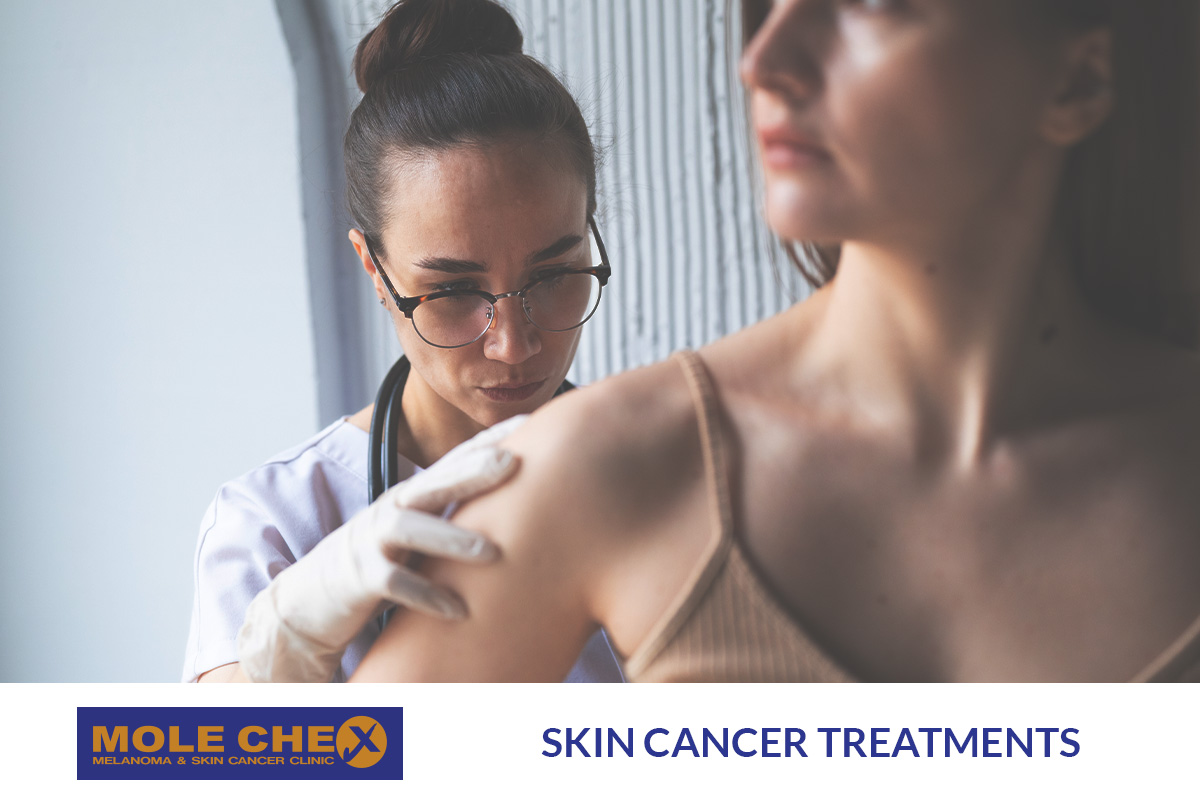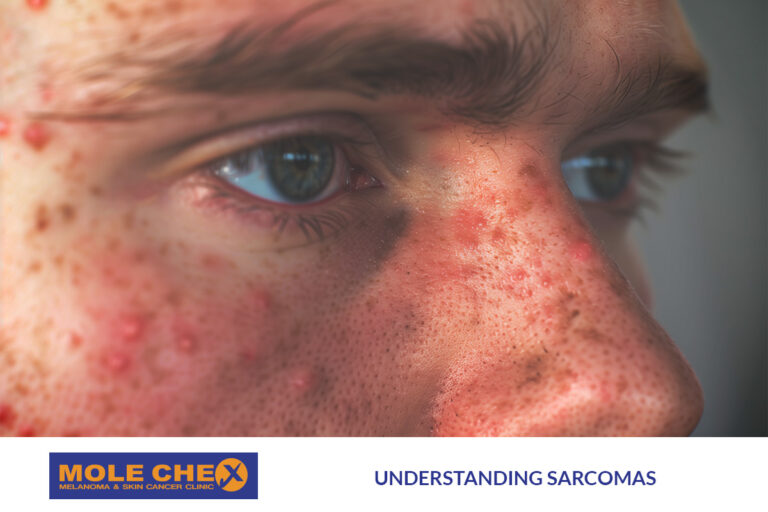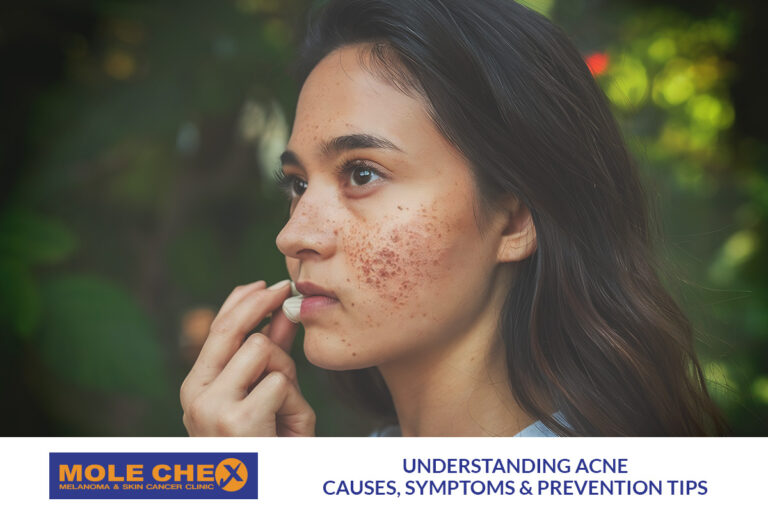Navigating Skin Cancer Treatment: Your Comprehensive Guide

Skin cancer is one of the most common types of cancer worldwide, and early detection and treatment are crucial for successful outcomes. This comprehensive guide will take you through the journey of understanding skin cancer, from prevention to treatment, and provide essential insights for those in need. By the end of this article, you’ll have a clear understanding of skin cancer, how to identify it, the treatment options available, and steps for prevention.
In a world where prevention is often better than cure, understanding skin cancer is your first step toward maintaining healthy skin. This comprehensive guide unveils the intricacies of skin cancer, from early detection through treatment and recovery.
Understanding Skin Cancer : What Exactly is Skin Cancer?
Skin cancer is an abnormal growth of skin cells, typically caused by damage from ultraviolet (UV) radiation. The most common types are basal cell carcinoma, squamous cell carcinoma, and melanoma. While the first two are more common, melanoma is the most aggressive. Understanding the type of skin cancer is crucial, as it influences the treatment and prognosis.
To navigate this journey, it’s crucial to comprehend your foe. Skin cancer occurs when the body’s skin cells undergo abnormal growth. Understanding the different types of skin cancer is essential for early recognition:
- Basal Cell Carcinoma (BCC): BCC is the most common type of skin cancer, typically found on areas of the skin that receive a lot of sun exposure. It often appears as a waxy bump or a pearly-looking growth. The good news is that BCC rarely spreads but should be treated promptly to prevent further damage.
- Squamous Cell Carcinoma (SCC): SCC is the second most common type and often occurs on areas exposed to the sun. It can look like a scaly patch, a sore that doesn’t heal, or a warty growth. While SCC is less likely to spread than melanoma, early treatment is crucial.
- Melanoma: Melanoma is the most aggressive type of skin cancer, originating in the cells that produce pigment. It can appear as an unusual mole, often exhibiting the ABCDE’s warning signs
Regular Skin Checks & Skin Safety: Your First Line of Defence
The journey to healthier skin begins with regular skin checks. Just as you’d schedule routine health check-ups, your skin deserves the same attention. Consulting a skin doctor for a thorough skin examination can detect any unusual moles or skin changes early, increasing the chances of successful treatment. Prevention and early detection are invaluable allies in the fight against skin cancer.
Skin checks are typically non-invasive and generally painless. A skin doctor will carefully examine your skin, focusing on moles, growths, and any unusual skin changes. While discomfort during a skin check is minimal, the peace of mind it brings is immeasurable. By examining your skin thoroughly, you can detect any unusual changes early. Early detection is often the key to successful treatment.
Tips for your Sun Safety:
- Sun Protection: Always apply sunscreen when going outside, wear protective clothing like wide-brimmed hats, sunglasses, and long sleeves, and seek shade during peak sun hours.
- Avoid Tanning Beds: Tanning beds emit harmful ultraviolet (UV) rays that can increase the risk of skin cancer. Avoid them entirely.
- Regular Skin Checks: Regular skin checks with a skin doctor are crucial for early detection, especially if you have a family history of skin cancer or multiple moles.
Signs to Look for
Knowing the signs of skin cancer is vital. These include changes in the appearance of moles or birthmarks, new growths, sores that don’t heal, and changes in the color, shape, or size of existing moles. Keep an eye out for any unusual developments on your skin during your regular self-examinations.
Early detection hinges on recognizing the signs. Suspicious moles, growths, or skin changes should be monitored. The ABCDE rule is a helpful tool, but here’s a more in-depth exploration:
- A: Asymmetry: Healthy moles are typically symmetrical. If one half of the mole doesn’t match the other, it may be a cause for concern.
- B: Border irregularity: Uneven, jagged, or poorly defined edges can indicate a potential issue. The edges of a benign mole are usually smooth.
- C: Color variation: Multiple colors or uneven color distribution within a mole can be a red flag. Most benign moles are a single shade of brown.
- D: Diameter larger than 6mm: While not all moles larger than 6mm are cancerous, any mole exceeding this size should be examined.
- E: Evolving: Changes in size, shape, or color over time are a significant cause for concern. If a mole is evolving, it should be evaluated by a skin doctor promptly.
Taking Action: What If a Mole Turns Out to Be Cancerous?
If you notice any suspicious changes, it’s essential to consult a skin doctor. They can perform a biopsy to determine if the mole is cancerous. If it is, don’t panic. Skin cancer, especially when detected early, is highly treatable. Your skin doctor will guide you through the next steps, which might include further tests to stage the cancer and plan treatment.
A mole that raises suspicion must be evaluated further through a biopsy. Don’t panic, as the treatment options for skin cancer have seen significant advancements in recent years.
Skin Cancer Treatment Options
The treatment options depend on the type, stage, and location of the cancer. They can range from simple outpatient procedures to more complex surgeries or radiation therapy. Understanding the options available and discussing them with your healthcare team is crucial in making informed decisions. Common treatments include:
- Surgery: The most common treatment for non-melanoma cancers, it involves excising the cancerous tissue. The surrounding healthy tissue is also removed to ensure all cancer cells are gone.
- Radiation Therapy: This method uses high-energy rays to target and kill cancer cells. It’s often used for cancers in challenging-to-reach areas where surgery is difficult.
- Chemotherapy: Administering drugs to kill cancer cells is another approach. For skin cancer, this is typically a topical treatment, applied directly to the skin.
- Immunotherapy: This treatment boosts the body’s immune system to fight cancer. It’s particularly effective for melanoma and is used when the cancer has spread to other parts of the body.
The Road to Recovery
Recovery time varies depending on the type of skin cancer and the treatment provided. For minor cases, recovery may only take a few weeks. For more extensive surgeries or treatments, it could be longer. Your healthcare team will provide you with an estimate of your recovery time.
The duration of recovery varies, but with early detection, the chances of full recovery are promising. Your skin specialist will provide a tailored recovery plan and monitor your progress. Recovery can be influenced by factors such as the cancer type, stage, and your overall health. For most skin cancer surgeries, recovery is relatively quick, and you can expect to resume your regular activities within a few weeks.
Is it Preventable?
While not all cancers are preventable, there are steps you can take to reduce your risk. The most crucial aspect is sun protection. Use sunscreen, wear protective clothing, and avoid excessive sun exposure, especially during peak UV hours. Regular skin checks and early detection are also key to preventing advanced skin cancer. While not entirely preventable, reducing your risk is achievable. Proper sun protection, avoiding tanning beds, and regular skin checks are your allies in preventing skin cancer.
FAQs: Your Skin Health Questions Answered
No, skin checks are non-invasive and generally painless. Any discomfort experienced is minimal.
A yearly skin check is advisable, but consult your skin doctor for a personalized schedule based on your risk factors.
Not all changes are concerning, but any evolving mole should be evaluated promptly by a skin doctor.
Consult Molechex Skin Doctors
For expert skin checks and skin cancer treatments, Molechex Skin Doctors are your trusted partners. Our experienced skin doctors are here to guide you through the journey toward healthier skin. Don’t let it navigate your life; take control with Molechex.
Your skin health is worth the effort. Schedule your skin checks today and embrace a healthier tomorrow. Don’t wait; the journey to healthier skin begins with knowledge. Be proactive in your skin health.
Read other article :



